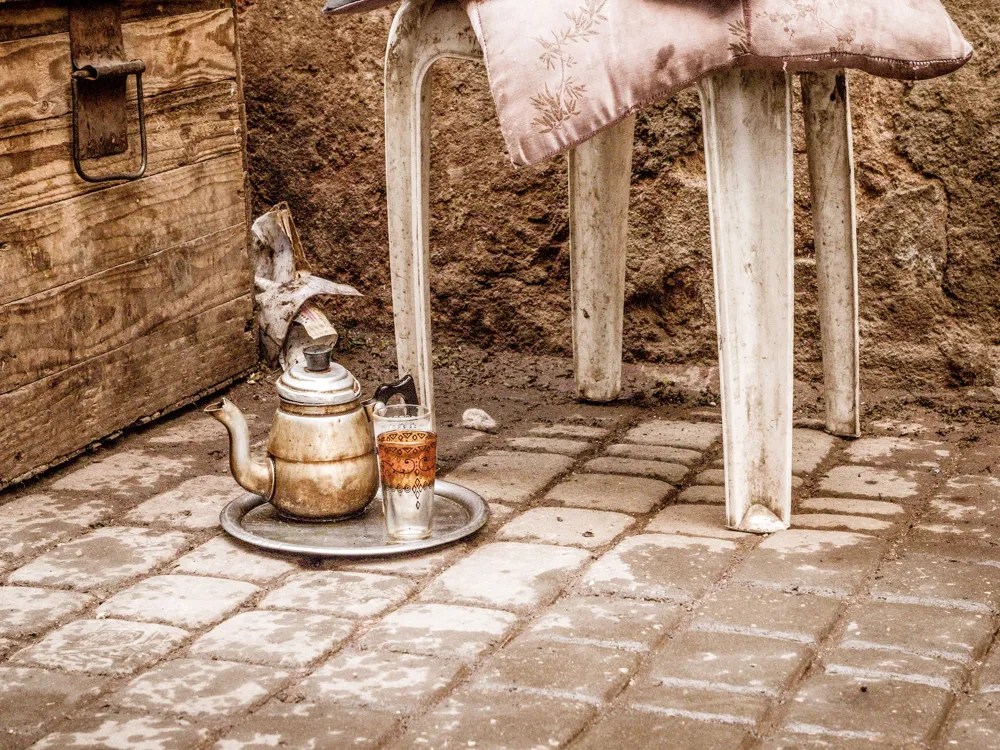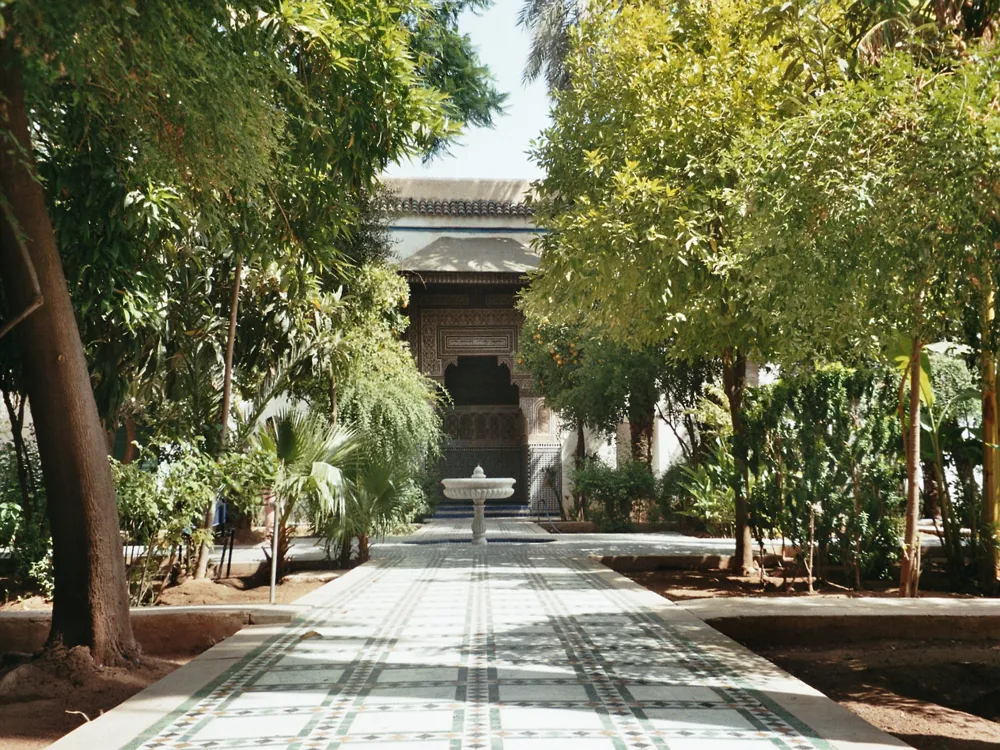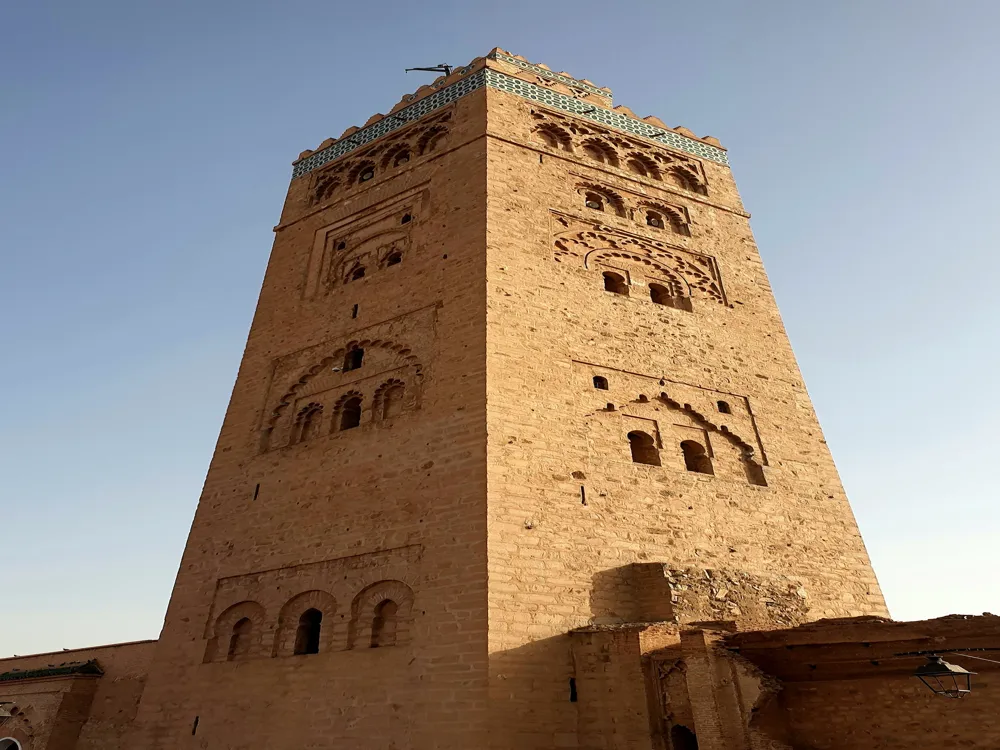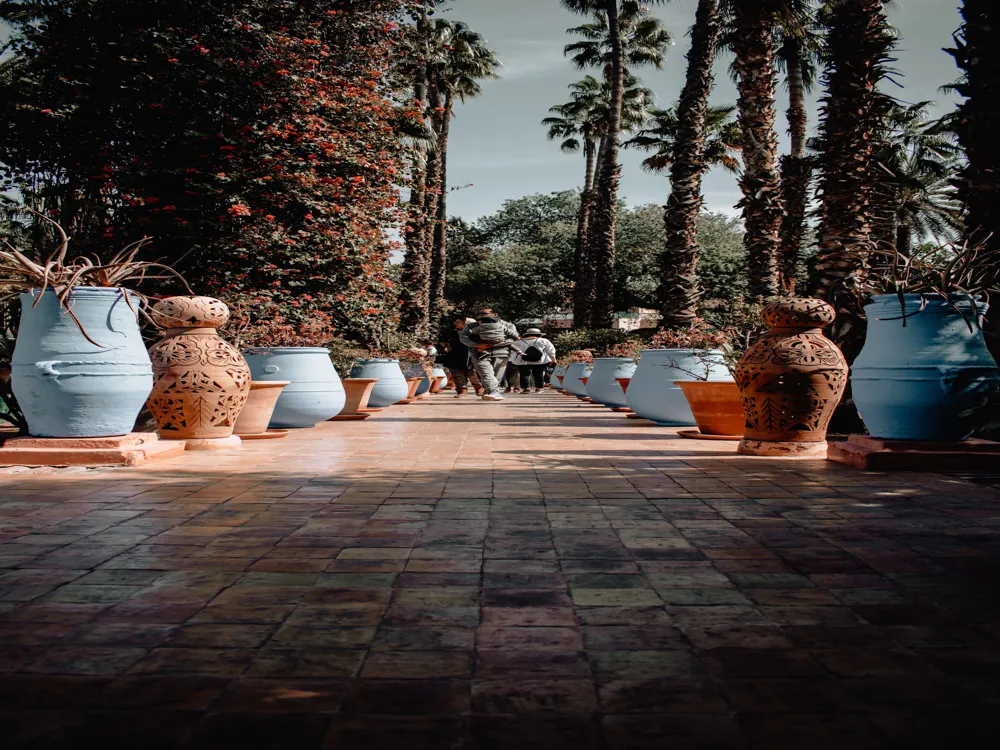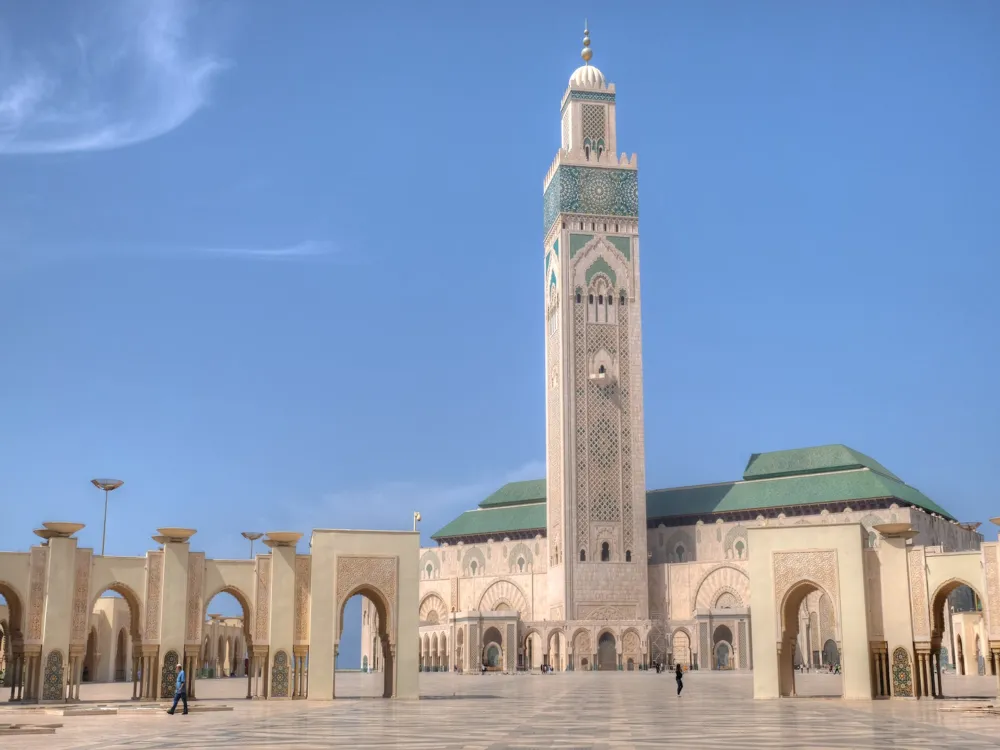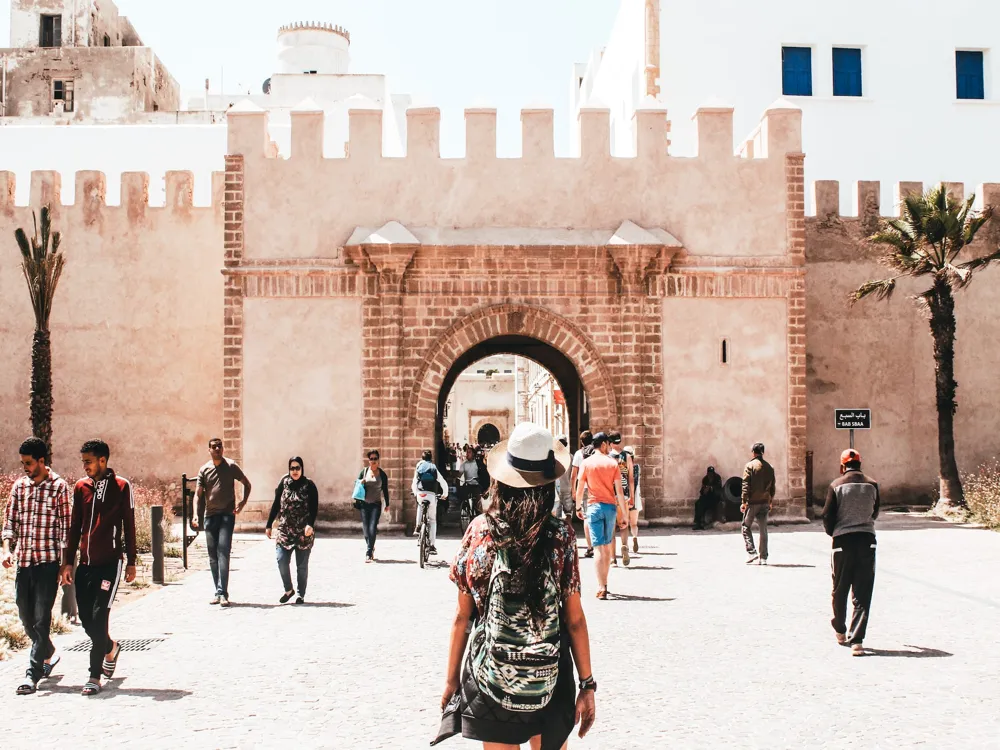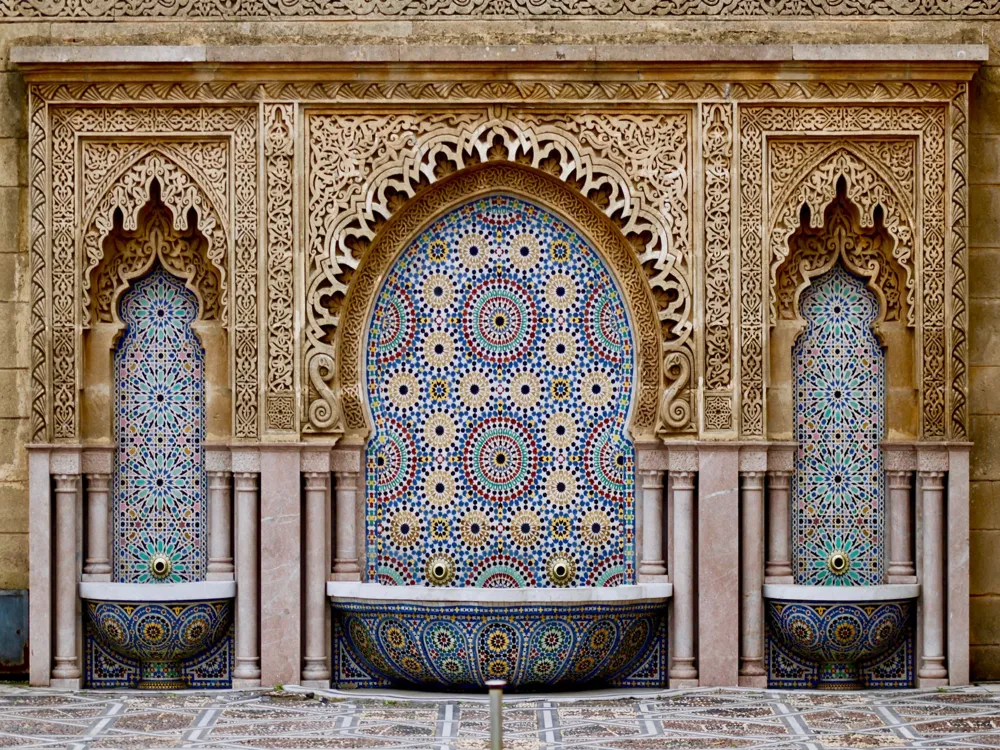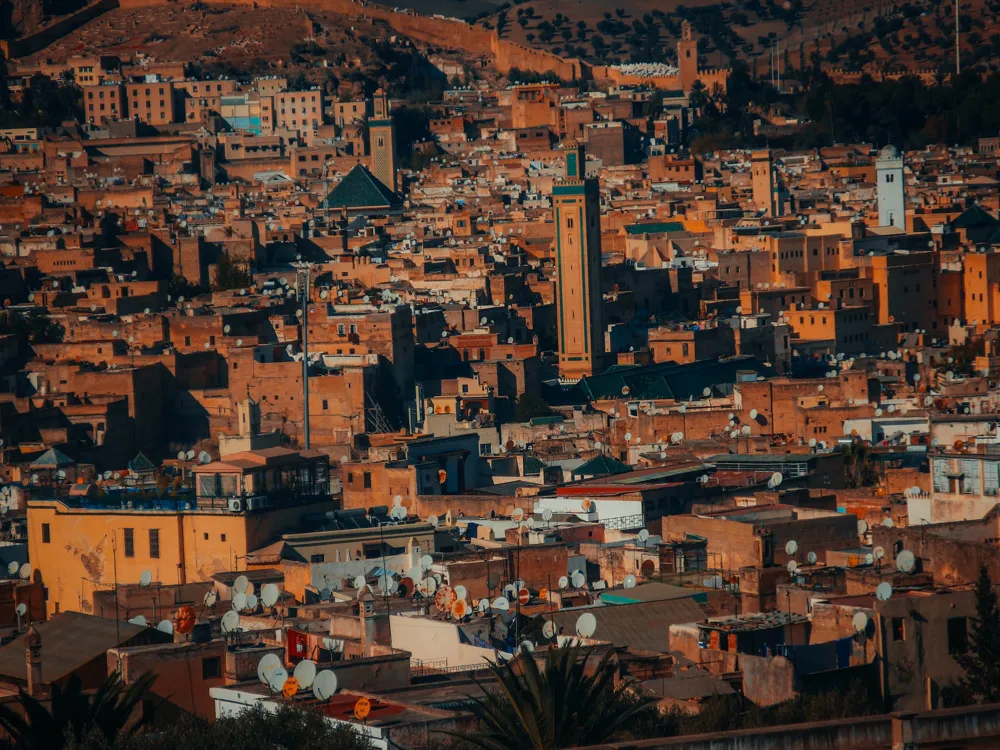The Almoravid Koubba in Marrakech stands as a resplendent testament to Morocco's rich history and architectural heritage. Dating back to the 12th century, this ancient monument is an embodiment of the Almoravid dynasty's architectural ingenuity. As one of the few remaining examples of Almoravid architecture, the Koubba holds significant historical and cultural value. It's not just a building; it's a portal to the past, offering insights into the art, religion, and daily life of an era long gone. The Almoravid Koubba's history is intertwined with the story of Marrakech itself, a city that was once the heart of a vast empire. The term 'Koubba' essentially refers to a domed building, and the Almoravid Koubba is renowned for its intricate dome, adorned with exquisite motifs and carvings. The monument's design reflects the artistic and architectural motifs prevalent during the Almoravid period, making it a key site for understanding the evolution of Moroccan and Andalusian architecture. Despite its age, the Koubba has withstood the test of time, surviving periods of neglect and restoration. Its resilience is a tribute to the skill and craftsmanship of its creators. The significance of the Almoravid Koubba extends beyond its architectural beauty. It is a symbol of the religious and cultural ethos of its time. Originally built as an ablution house for the nearby mosque, it played a crucial role in the spiritual life of the community. Today, it serves as a historical landmark, attracting scholars, architects, and tourists from around the world, all drawn by its unique charm and historical significance. The Almoravid Koubba is not just a structure; it's a masterpiece of Islamic architecture, showcasing the artistic prowess of the Almoravid era. Its architecture is a harmonious blend of both aesthetic beauty and functional design, reflecting the Islamic principles of balance and proportion. The Koubba's structure is primarily characterized by its iconic dome, a marvel of engineering and artistry. The dome of the Koubba is an architectural wonder, adorned with intricate geometric patterns and calligraphy. These decorations are not merely ornamental; they reflect the deep spiritual and philosophical underpinnings of Islamic art. The use of geometry is symbolic, representing the unending nature of the universe and the infinite wisdom of the Creator. This blend of aesthetics and spirituality is a hallmark of Islamic architectural philosophy. The interior of the Almoravid Koubba is equally mesmerizing. The play of light and shadow within the space creates an ethereal atmosphere, transporting visitors to a bygone era. The use of arches and columns not only supports the structure but also adds to its beauty, showcasing the Almoravid dynasty's mastery over stone and masonry. The Koubba's interior is a testament to the advanced state of architectural knowledge and skill during the Almoravid period. The exterior of the Koubba is equally impressive, with its robust walls and detailed façade. The façade features a blend of decorative motifs, including floral designs and Kufic inscriptions, which were typical of the period. These elements are not just decorative; they serve as a testament to the cultural and intellectual milieu of the Almoravid era, reflecting influences from across the Islamic world. In essence, the architecture of the Almoravid Koubba is a confluence of beauty, spirituality, and intellect. It stands as a symbol of the Almoravid dynasty's contribution to Islamic architecture and continues to inspire and awe visitors and scholars alike. The best time to visit the Almoravid Koubba is during the cooler months from October to April. The weather during this period is pleasant, making it ideal for exploring and appreciating the monument's intricate details without the discomfort of the intense heat. Opt for a guided tour to gain a deeper understanding of the Koubba's history and architectural significance. Knowledgeable guides can provide insights that you might miss if exploring on your own, enriching your experience. For photography enthusiasts, the intricate designs and the interplay of light and shadow inside the Koubba offer great opportunities for stunning photographs. Early morning or late afternoon light can add a magical effect to your shots. Remember to dress modestly and respect local customs when visiting the Koubba. As a historical Islamic monument, it's important to be culturally sensitive and considerate. Combine your visit to the Almoravid Koubba with other nearby attractions in Marrakech, such as the Ben Youssef Madrasa and the Marrakech Museum, to make the most of your trip. The Almoravid Koubba is located in the heart of Marrakech's medina, making it easily accessible. Visitors can reach the Koubba by various means: Regardless of how you choose to get there, visiting the Almoravid Koubba is an enriching experience, offering a glimpse into Morocco's illustrious past and architectural grandeur. Read More:Overview of Almoravid Koubba, Marrakech
Architecture of Almoravid Koubba
Tips When Visiting Almoravid Koubba
Best Time to Visit
Guided Tours
Photography Tips
Respect Local Customs
Nearby Attractions
How To Reach Almoravid Koubba
Almoravid Koubba
Marrakech
₹ 89,000 onwards
View marrakech Packages
Weather :
Tags : Mosque
Timings : Monday to Friday: 8.30AM-6PM; Closed on Saturday and Sunday
Entry Fee : Dh 10
Planning a Trip? Ask Your Question
Marrakech Travel Packages
View All Packages For Marrakech
Top Hotel Collections for Marrakech

Private Pool

Luxury Hotels

5-Star Hotels

Pet Friendly
Top Hotels Near Marrakech
Other Top Ranking Places In Marrakech
View All Places To Visit In marrakech
View marrakech Packages
Weather :
Tags : Mosque
Timings : Monday to Friday: 8.30AM-6PM; Closed on Saturday and Sunday
Entry Fee : Dh 10
Planning a Trip? Ask Your Question
Marrakech Travel Packages
View All Packages For Marrakech
Top Hotel Collections for Marrakech

Private Pool

Luxury Hotels

5-Star Hotels

Pet Friendly







